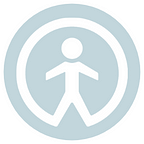Testing for accessibility? Top 5 user recruitment tips
With more companies concerned about digital inclusion, there are some things to remember when trying to find the right users to test your products.
Recruiting users to test products and services with the end goal of making them more accessible is “a growing need, something that companies and agencies are accommodating for and that they now understand,” according to the user recruitment team at People for Research. Our experience working on hundreds of projects over the last few years shows that “the vital role of disabled people in usability testing has definitely been growing.”
“Our clients specifically ask the users to bring their own devices in and test the website using different types of assistive technology to make sure no one is left behind.”
Disabled people are aware of this change and seem pleased that more companies are recruiting to test accessibility. The number of people who use assistive technology and offer their time to work with People for Research is also growing.
These are just some of the reasons why at People for Research we decided to create a new service: the Accessibility Collective. You can read more about it on the PFR blog 👇
So, if your company or agency is looking to test a product or service with the help of people with accessibility requirements, here are our top five user recruitment tips.
1. Give the recruiters more lead time ⏰
Whether you are recruiting in-house or working with a recruitment partner like People for Research, be aware that you’ll need a longer lead time than usual to recruit people with disabilities. This means more time to recruit, as well as more time to replace the drop-outs.
We would advise you to give your recruitment team or partner at least three weeks lead time to recruit disabled people, especially if you want fresh participants that have never taken part in paid research.
2. Expect a higher drop-out rate 👋
Clients should expect a higher-than-usual drop-out rate when recruiting disabled users for several reasons: they might feel unwell on the day of research, their carer might be busy or they might have a last minute doctor’s appointment. That is why having a couple of all-day standbys is a good idea, when possible.
3. Make sure your budget can accommodate the costs 💰
If you are working with a recruitment partner, and depending on how complicated your brief is, remember there could be a lot of research work involved in recruiting people with accessibility issues.
At People for Research, for instance, we regularly go outside of our database to find the right people. We contact charities, organisations and groups of people; and then these groups need time to distribute the information and send invites. Next, we need time for the potential participants to contact us back; we actually only start screening participants after this whole process. All of this to say, recruiting the right participants who use a specific type of assistive technology could be time-consuming, which makes the recruitment a bit more expensive.
Finally, remember that people with disabilities, and their carers when necessary, need to be properly rewarded for their time.
4. Be understanding 👍
Sometimes it is impossible for disabled people to carry their assistive devices around, so bringing the technology with them on the day of testing might not be feasible. Luckily, most of our clients can usually work out alternative solutions, sometimes with the help of their recruitment partner.
5. Do your homework 📚
Remember that recruiting people with accessibility issues could mean having to spend more time than usual doing research before the testing takes place. It’s important for the researchers to be informed about accessibility software, the different types of assistive devices and potential compatibility issues, so make sure beforehand that your prototype works with the software and hardware you will be using during testing.
We want to keep in touch. Join our mailing list to receive our newsletter and/or our monthly round-up.
